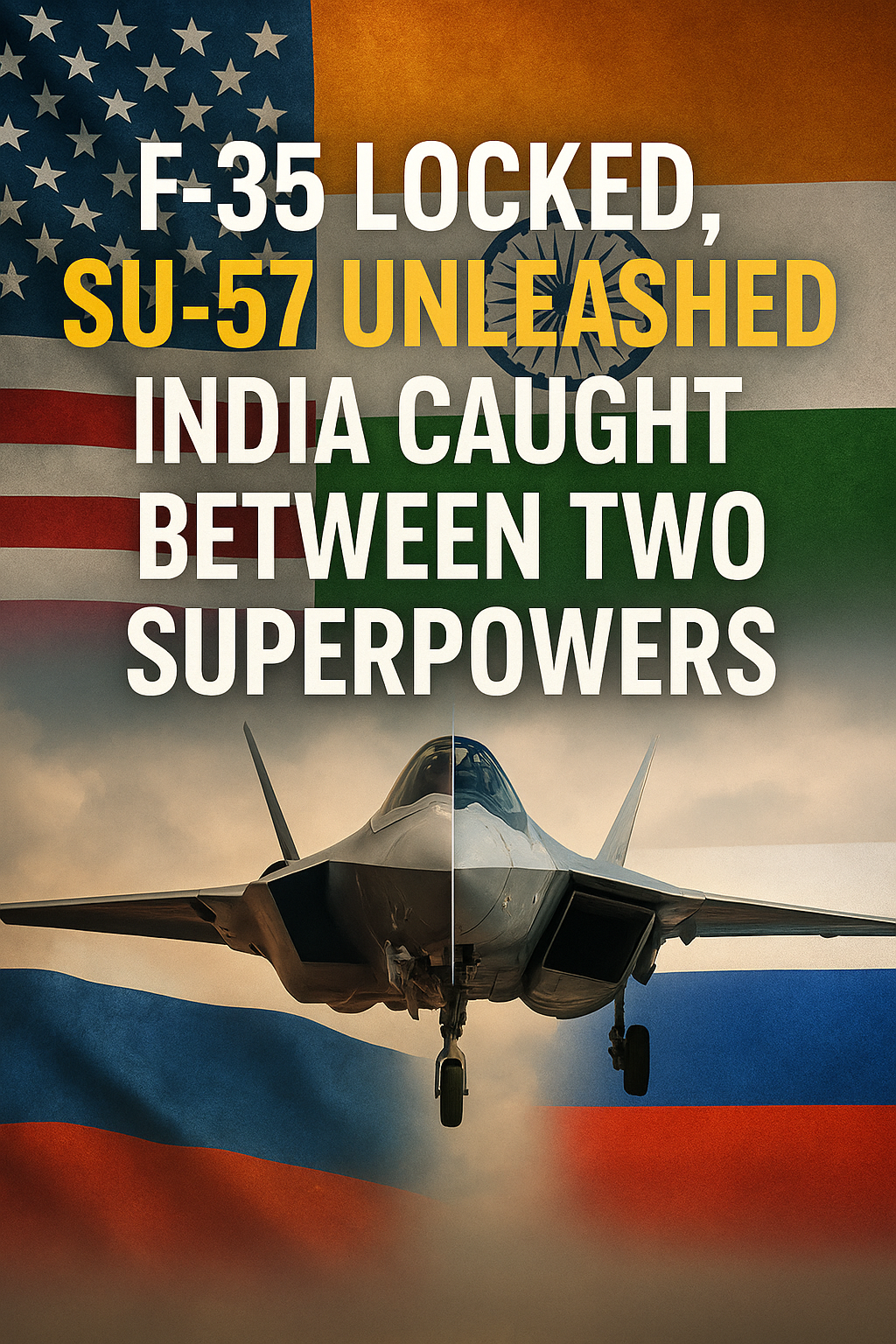In this post
-
Russia’s Su-57E source code offer is a game-changer.
-
India gains full autonomy over customization—a privilege denied by the West.
-
The proposal redefines global defense partnerships, with tech freedom at its core.
A Rare Offer from Russia
In a surprising move that has caught the attention of global defense circles, Russia has made a powerful proposal to India — offering full access to the source code of its Su-57E stealth fighter jet. This offer came from Russia’s United Aircraft Corporation and is seen as an extraordinary gesture. If accepted, it would allow India to control and modify the jet’s internal systems freely.
This is not a small deal. The source code of a fighter jet is like its brain. It tells the jet how to fly, how to fight, and how to respond to threats. By giving access to it, Russia is offering India the ability to change how the Su-57 behaves, add its own weapons, and make improvements without asking for permission.

This move comes at a time when the United States has been promoting its F-35 Lightning II to India. The F-35 is one of the most advanced fighter jets in the world, but the US does not allow any country full access to its software. Even close allies like the United Kingdom and Australia are only allowed limited access.
Russia’s offer, therefore, stands out as a very rare one in the world of defense deals — especially when it involves the next-generation Su-57 stealth fighter.
Why This Matters for India
India is in a tough position. The country faces growing military challenges from both China and Pakistan. China’s J-20 stealth fighter patrols the northern skies, while Pakistan’s JF-17 fighter, made with China’s help, remains active on the western border. With such threats around, India needs strong air power to protect its territory.
India currently has only 31 active fighter squadrons, while the government has approved a requirement of 42 squadrons. This shortfall is serious. The air force needs more aircraft to guard such a large country effectively. In 2016, India received 36 Rafale jets from France. But even with those, the shortage remains.
India Ditches Russian Missiles! U.S.-Europe Fill the Void — Is Moscow Isolated?
One of the problems India has faced with Western aircraft, like the Rafale, is the restriction on software access. Without the source code, India cannot fully customize these jets. For example, it cannot freely add its own weapons like the BrahMos missile — a powerful missile made in India — to foreign-made jets.
However, Russia has been more flexible. Indian-made weapons have already been added to the Russian Su-30MKI fighter, which forms a major part of India’s air force today. Now, with the Su-57E offer, Russia is going a step further by offering full control over the jet’s software.
The Su-57E is Russia’s most advanced stealth fighter. It can fly at speeds up to Mach 2 (twice the speed of sound), carry up to 10 tons of weapons, and use special technology to avoid radar detection. While some experts believe it is not as stealthy as the F-35, the Su-57E is praised for its ability to move quickly, avoid missiles, and even carry hypersonic weapons like the Kinzhal missile.
The Bigger Picture: Russia vs US
This offer from Russia is not just about jets — it is part of a bigger struggle between world powers. The United States has been growing closer to India in recent years. It wants to sell high-end defense equipment, including the F-35, and build a strong partnership in the Indo-Pacific region. But Washington’s policies come with limits. The US does not share the full source code of the F-35 with any country. That means India would not have full control over the jet, even if it buys it.
Confirmed Strike: Indian S-400 Downs PAF’s U.S.-Made F-16 Near Sargodha Air Base
Also, there are risks tied to US laws like CAATSA, which punish countries for buying weapons from Russia. When India bought Russia’s S-400 missile system in 2021, the US was unhappy and warned about possible sanctions.
Still, Russia remains India’s top supplier of military gear. Over 60% of India’s defense equipment comes from Russia. Key systems like the Su-30MKI fighters and the S-400 missiles have become the backbone of Indian air defense.
With the Su-57E offer now on the table, Russia is clearly trying to hold its position in India’s defense plans. By offering something the US has never done — complete access to the jet’s programming — Russia is trying to show that it is a more reliable and flexible partner.
The source code offer is especially powerful because it would allow India to truly make the Su-57E its own. India could fit its own radar systems, weapons, sensors, and communication tools, giving it full independence over how the jet is used in battle.
This is a rare moment in military history. A major power is offering another country full control over a top-level fighter jet. It shows how important India has become in the global defense market, and how far Russia is willing to go to maintain its place as India’s main military partner.
As India looks at both offers — the American F-35 and the Russian Su-57E — it faces a tough decision. Each option brings different strengths and challenges. But with the Su-57E’s source code on the table, Russia has made its boldest pitch yet in the race for India’s next-generation air power.
